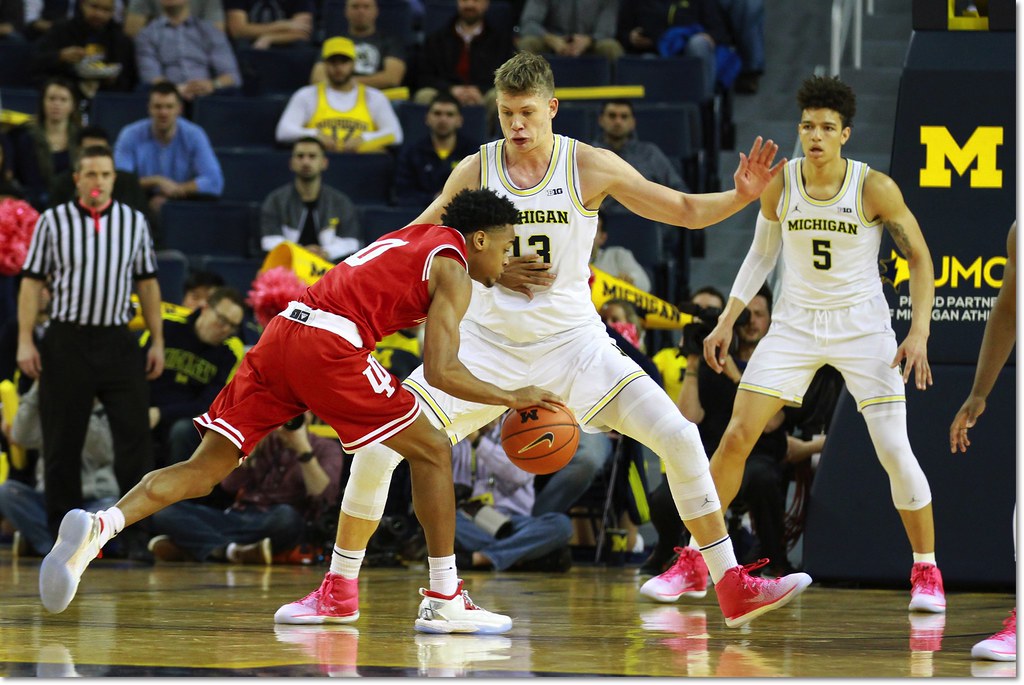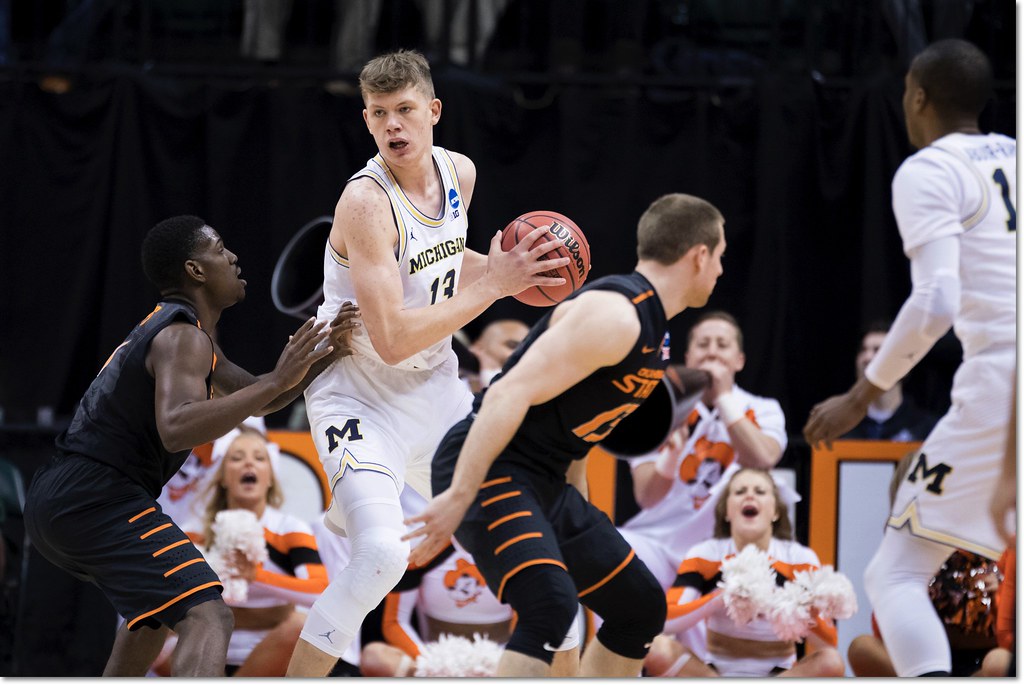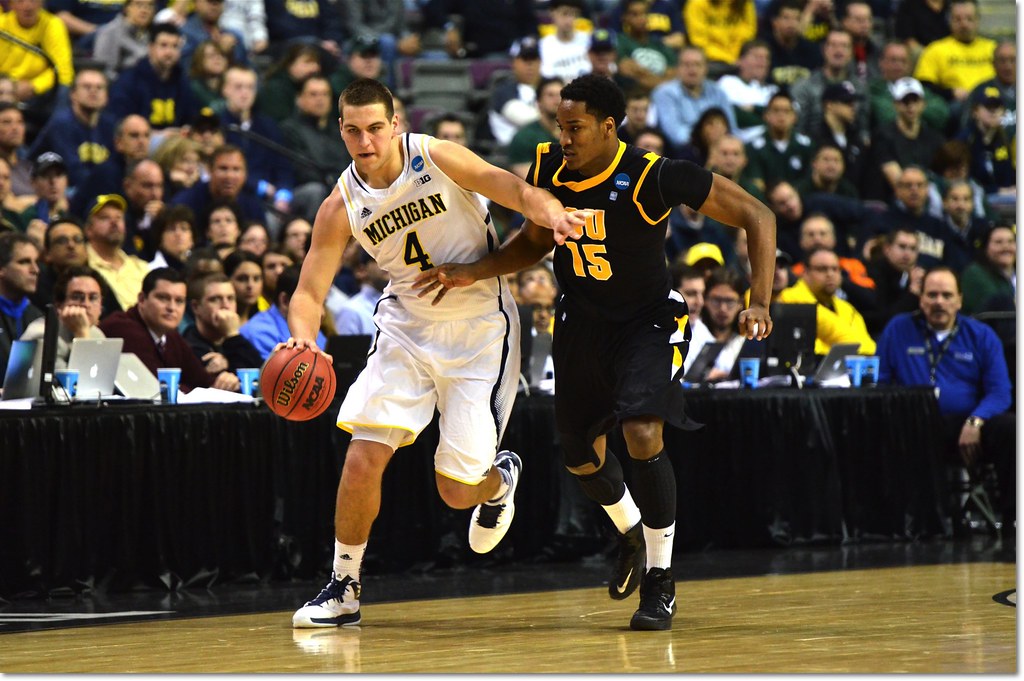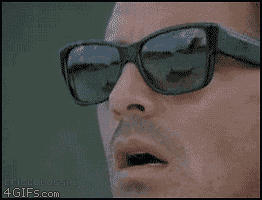The All-Beilein Teams: Giants


Space is limited. [Eric Upchurch]
Previously: All-Bench, Bench Mob, All-Freshman, All-Senior, Small Ball
John Beilein has spent ten seasons in Ann Arbor. As of the most recent, he's the winningest coach in program history with 215. He snapped Michigan's post-sanction tournament drought in 2009, the first of seven NCAA appearances with the Wolverines, three of which have extended at least into the second weekend.
In recognition of the above, as well as the need for offseason #content, I've put together a series of All-Beilein teams, inspired by this twitter post and the ensuing conversation. My guidelines:
- I'm attempting to put together the best possible lineups, which isn't necessarily the same as picking the best individual players at each spot.
- I'm choosing individual player vintages (i.e. 2013 Trey Burke). A player can only be chosen once for each category, but different player years (i.e. freshman bench gunner 2014 Zak Irvin and well-rounded senior 2017 Zak Irvin) can be eligible for separate categories.
- The same player/year can be chosen for multiple categories—for instance, 2013 Mitch McGary making the All-Bench team doesn't exclude him from making the final All-Beilein team.
Eligibility for certain categories may be slightly fudged because of the limited pool of players.
I'm not putting too many constraints on myself for this exercise since the point is to let our imaginations run wild.
Today's lineup is the counterpart to the small-ball squad. This time I'm putting together the biggest conceivable lineup that'd still play with some cohesion. While attempting to construct a 2014 Kentucky facsimile is very much at odds with Beilein's approach, there are enough quality bigs and ultra-skilled wings to assemble an overwheling group.
POINT GUARD: 2015-16 CARIS LEVERT

LeVert's passing acumen makes him an ideal oversized PG. [Bryan Fuller]
I know, I know, a true 6'4" point guard is sitting right there in Darius Morris. I know, I know, LeVert only played half of his senior season. I still want shooting, though, and for all Morris's talent, 25% three-point marksmanship with no ability to pull off the high screen doesn't cut it here.
Also, I'm a LeVert stan through and through, and will insist until my dying days that he'd have been a national player of the year finalist if he'd been healthy for all of 2015-16. As the functional point guard and clear-cut #1 offensive option, he shot 53% on twos, 45% on threes, and 79% from the line with a high free throw rate; he dished out 74 assists against only 25 turnovers; he led the team in defensive rebounding rate. At 6'7" with a 6'10" wingspan, his length and NBA-caliber athleticism would overcome any quickness deficiency against opposing point guards on defense. Let me have this.
[Hit THE JUMP for the rest of the post.]
SHOOTING GUARD: 2013-14 NIK STAUSKAS

Not pictured: big man preparing for wide open dunk. [Upchurch]
At 6'6", Stauskas has excellent size for a college two-guard, and he gives the team another shot creator to pair with LeVert. In a lineup that mostly sticks players slightly out of position, Stauskas gets to play his natural spot, and his game fits what is needed here: he can create and make his own shot from nothing and he's a tremendous ball screen player—in 2013-14, Michigan graded out in the 94th percentile on possessions when Stauskas passed out of the pick-and-roll, per Synergy.
SMALL FORWARD: 2016-17 DJ WILSON

Wilson's length makes driving tough for opposing wings. [Fuller]
Wilson made a major late rise up NBA draft boards because of the skills that make him a great fit in this lineup. For one, he's big: 6'10" with a 7'3" wingspan. For another, he has the skill of a wing—he made 37% of his 110 three-point attempts last season—along with certified big man traits, namely above-average shot-blocking and efficient finishing around the basket.
Wilson also graded out as Michigan's best individual defender last year, according to Synergy. He did his best work on that end against more perimeter-oriented players, who had significant trouble getting clean looks over his lanky closeouts. In this lineup, Wilson can focus on spot-up shooting, cutting for open dunks, and using his length to be an impactful defender both inside and outside the paint.
POWER FORWARD: 2016-17 MOE WAGNER

Slight mismatch. [Marc-Gregor Campredon]
The hope here is Wagner's combination of size and offensive talent overcomes his clear defensive shortcomings, which will also be papered over by the sheer size of this lineup and the versatility of the two players flanking him. He's at least a disruptive presence on defense. Meanwhile, he's a terror on the other end, and his 40% three-point shooting ensures that this lineup won't sacrifice spacing for size.
Wagner is the ideal pick-and-roll/pop partner for LeVert and Stauskas—the thought of those three running a high screen with either LeVert or Stauskas waiting in the corner for the defense to provide help is enough to get a man salivating. If Wagner winds up with a mismatch, he can also go to work on the block. As the #3 scoring option with this backcourt, he'd be functionally unstoppable.
CENTER: 2012-13 MITCH MCGARY

Bull in china shop. [Fuller]
The glue guy. McGary may not be a seven-footer, but he sure rebounded like one, and he provides decent rim protection and a ton of disruption on defense. He has just enough range not to ruin the team's offensive spacing, and his passing and finishing would be huge positives on that end. While McGary's biggest impact in this lineup would be on the boards, he'd do plenty more, too.
THE CHEMISTRY
Perhaps the craziest thing about this lineup—which features 6'7", 6'6", 6'10", 6'11", and 6'10" starters—is they could easily run Beilein's usual perimeter-oriented offense. This wouldn't be Purdue 2.0; it'd be more of a supersized version of last year's Michigan squad.
The main question is whether this team's size would overcome some awkward defensive fits. Wilson would be fine on one wing, but Wagner would be a negative on the other, and there isn't a truly impactful shot-blocker to make up for it. A team with this length might be better-served running a 2-3 zone.
HONORABLE MENTIONS: 2010-11 DARIUS MORRIS, 2012-13 TIM HARDAWAY JR., 2013-14 GLENN ROBINSON III, 2008-09 DESHAWN SIMS, 2013-14 JORDAN MORGAN
There isn't nearly as much shooting on this team, which would have to find other ways to score than usual Beilein offenses. Putting a gifted passer like Morris with Hardaway and GRIII is a decent start, and Sims provides a reliable inside-out scorer. This unit would provide some highlight dunks, but the significant dropoff from the first team shows how perimeter-oriented Beilein's Michigan squads have been—this looks nothing like Kentucky, or even Purdue.
Between McGary and Wagner this team would gamble for a steal on like every post entry feed.
That team sure would be fun to watch
Wow. This team would destroy. Imagine them playing the Syracuse zone!
Nailed it Ace. I was thinking THJ at the 2, but Nik fits the bill well.
Can we get an all Beilein 2*/walk-on squad? Eso baby!
I have to build some type of multi-year capable time machine and history re-creation thingy. I MUST see this team play together in March.
I'd love watching this lineup...they'd just have to switch screens like their lives depended on it.
I think a 2-3 would be okay until a team put a shooter in Wagner's corner...then we'd just get torched because there's no way he's getting out on a Stauskas like shooter in his corner. DJ Wilson would be a lock for giving up a 4-point play per game in the other corner. But he'd also lead the conference in blocked 3 point attempts.
That said, any team with Stauskas is going to struggle defensively...so a 2-3 is a way to hide him as well.
On the offensive end this lineup would be very NBA with the positionless basketball. Even though you have 3 "post" players, you wouldn't bog down the lane...Wagner can still take guys off the dribble and you could ISO or pick and pop Wilson off of screens all day long. Run that 1-3 screen and get Wilson on the block with a PG on him and let him go to work.

Comments